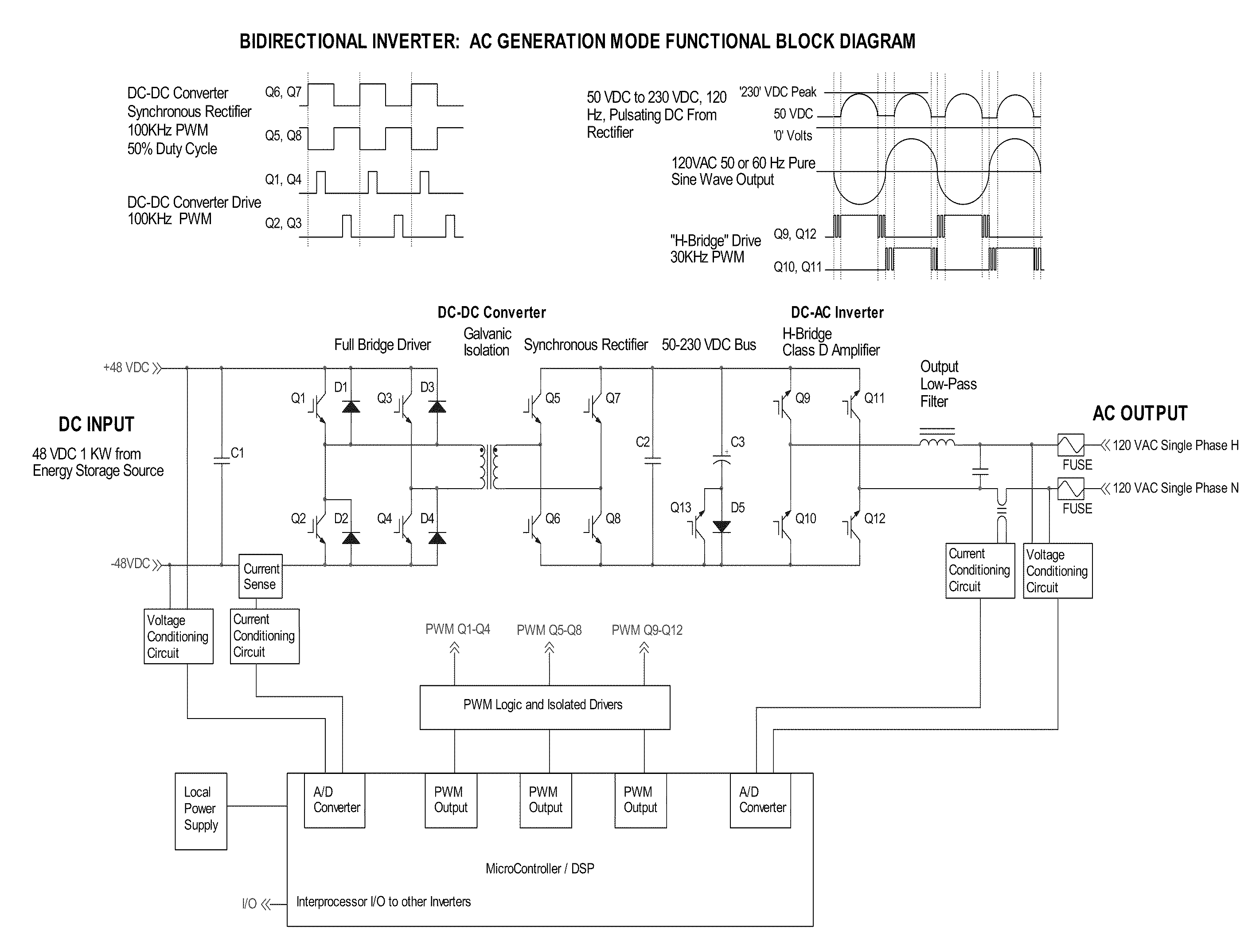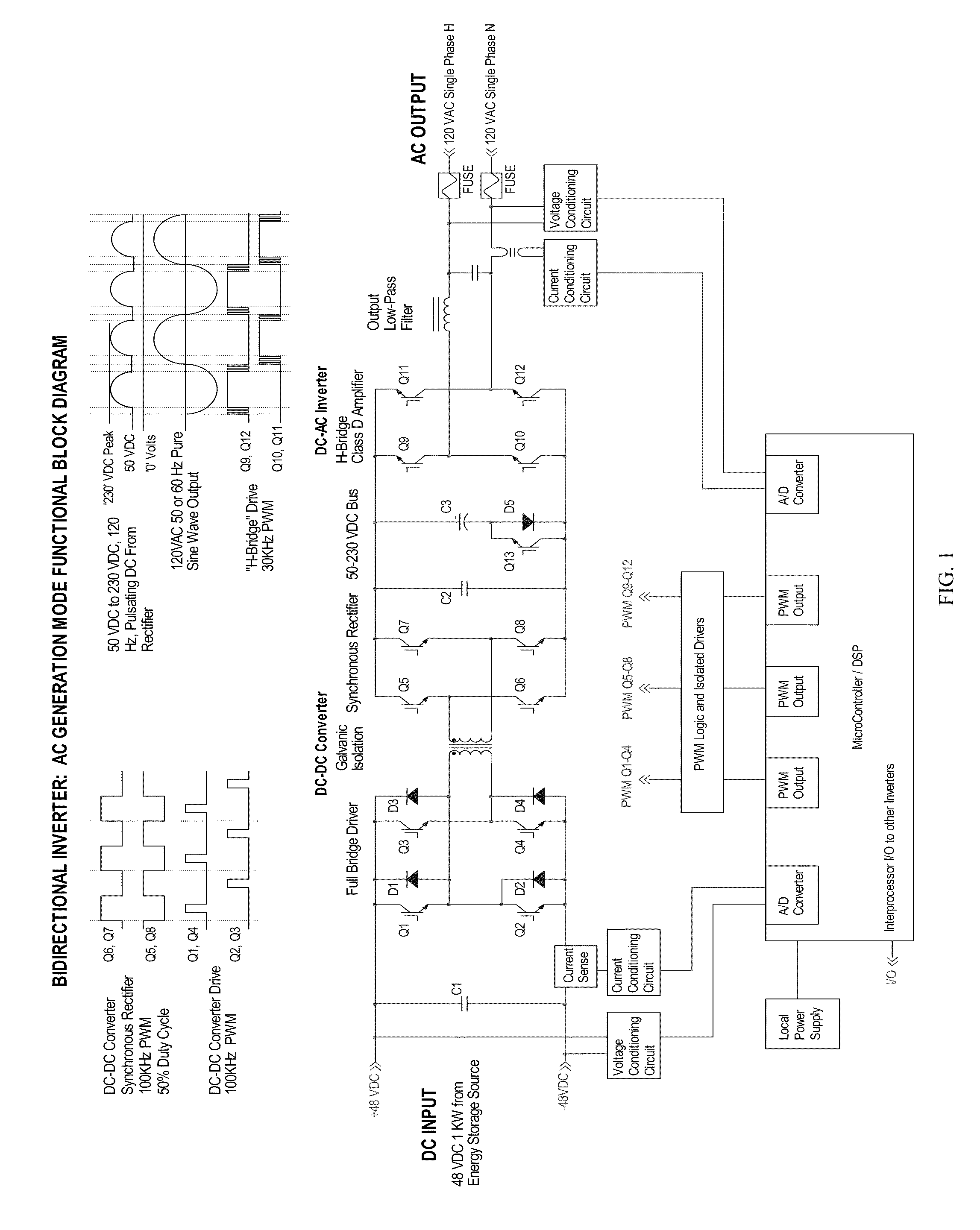Bidirectional energy converter
a technology of energy converter and bidirectional converter, which is applied in the direction of dc-dc conversion, electric vehicles, transportation and packaging, etc., can solve the problems that traditional energy conversion systems used as battery chargers cannot adapt to various energy storage technologies, and achieve the effect of reducing electromagnetic interference (emi) emissions or minimizing them
- Summary
- Abstract
- Description
- Claims
- Application Information
AI Technical Summary
Benefits of technology
Problems solved by technology
Method used
Image
Examples
Embodiment Construction
[0042]While preferred embodiments of the invention have been shown and described herein, it will be obvious to those skilled in the art that such embodiments are provided by way of example only. Numerous variations, changes, and substitutions will now occur to those skilled in the art without departing from the invention. It should be understood that various alternatives to the embodiments of the invention described herein may be employed in practicing the invention.
[0043]The invention provides a bidirectional converter, that may operate in an AC generation mode, where the bidirectional converter may function as an inverter to convert DC to AC. The bidirectional converter may also operate in a charge mode, where the bidirectional converter may function as a rectifier to convert AC to DC. The bidirectional converter may be able to operate in both modes within the same device or component, rather than utilizing two separate circuits or components for each mode. A single circuit may be...
PUM
 Login to View More
Login to View More Abstract
Description
Claims
Application Information
 Login to View More
Login to View More - R&D
- Intellectual Property
- Life Sciences
- Materials
- Tech Scout
- Unparalleled Data Quality
- Higher Quality Content
- 60% Fewer Hallucinations
Browse by: Latest US Patents, China's latest patents, Technical Efficacy Thesaurus, Application Domain, Technology Topic, Popular Technical Reports.
© 2025 PatSnap. All rights reserved.Legal|Privacy policy|Modern Slavery Act Transparency Statement|Sitemap|About US| Contact US: help@patsnap.com



